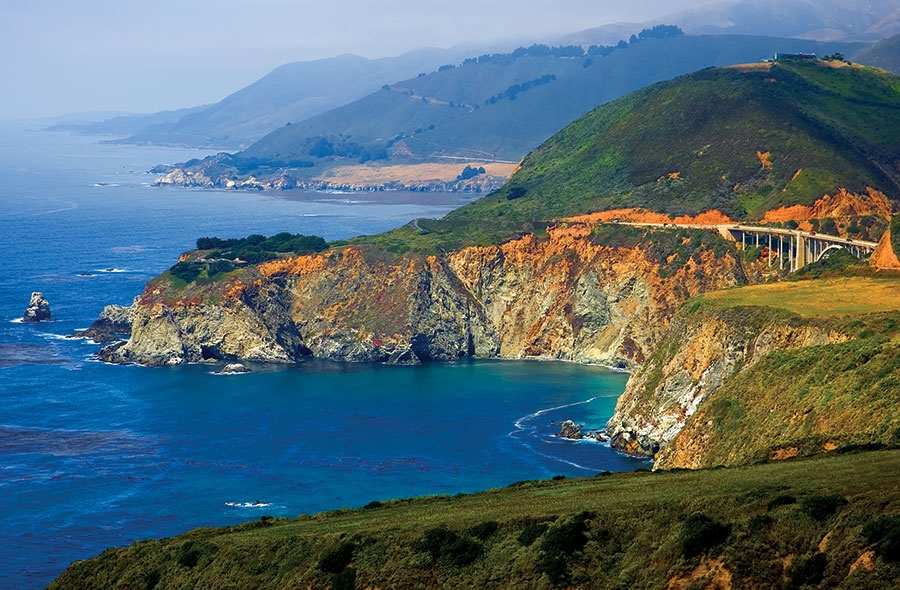
Located about 100 miles south of San Francisco, California, Monterey is one of America’s favorite tourist destinations, but do you know that wine is the number one specialty of the region?
If you are not a wine connoisseur and don’t spend your Saturdays visiting wine specialty stores, you may not have heard of the wines from Monterey County. Like the Napa, Sonoma, Santa Barbara and Paso Robles wine regions have already done, Monterey County is putting its wines on the map and has become, over the last decade, one of the most upscale regions for American wines from California.
Monterey County’s lifestyle and wines are defined by the cooling influence of the ocean and especially of Monterey Bay and its very deep marine canyon, whose immensity and depth have earned it the nickname, “The Blue Grand Canyon.” The region is a unique place to visit, and most of the Monterey County wineries have tasting rooms open to the public. These tasting rooms provide a relaxed atmosphere where guests receive knowledgeable, personal attention while tasting wines and learning about the winery. Several wineries also offer tours of their facilities where one can learn about the winemaking process.
Monterey Wine Country includes nine appellations that have been officially identified as having unique characteristics that impart special character to the grapes, and eventually, the wines. These 175 vineyards are in the AVAs (American Viticultural Areas) of Monterey, Santa Lucia Highlands, Arroyo Seco, San Lucas, Hames Valley, Chalone, Carmel Valley, San Antonio Valley and San Bernabe.
“From the steep slopes of Carmel Valley to the rolling hills of the Salinas Valley, Monterey stands alone in crafting wines of exceptional flavor, character and balance.”
Two main factors make Monterey County grapes different than the other California grapes. The first one is the Blue Grand Canyon. The Monterey Canyon begins at Moss Landing, in the middle of Monterey Bay, and extends approximately 95 miles into the Pacific Ocean. The canyon’s bottom is about two miles below the surface, making it comparable in depth to the Grand Canyon. This has a significant impact on the growing areas, the wind pattern, the constant and predictable weather throughout the county and the coolness of the northern to central regions of Monterey Wine Country.
Secondly, the Thermal Rainbow™ is a leading factor in the 42 varietals that are grown throughout the county. The influences of the Thermal Rainbow are both geographical and time dependent. At the start of the day, temperatures are consistent from Monterey Bay all the way to southern Monterey County, usually in the low 50s. The marine influence, driven by the sun, is the determining factor in the temperature variances across this vast region. As the day progresses, all areas experience a warming effect due to the sun. As the sun goes down, the region reverts to cooler temperatures quickly. Like guests at a vast coastal spa, this allows Monterey’s grapes to luxuriate in just-right conditions. Superb soils, warm sunshine and cool ocean breezes allow for a slow and leisurely ripening that lasts up to 60 days longer than other wine growing regions.
I have been touring the region for the last ten years and I have to say that the wines are becoming better year after year. I counted about 85 vintners and growers calling Monterey Wine Country “home.” From the steep slopes of Carmel Valley to the rolling hills of the Salinas Valley, Monterey stands alone in crafting wines of exceptional flavor, character and balance. Monterey has a relatively cool climate, so its signature varieties are Pinot Noir and Chardonnay. Dependable producers include the Testarossa Winery, Pessagno Winery, Roar, Morgan, Pisoni and Talbott Vineyards. Cool-climate Syrah abounds, too, from the likes of Novy Family Wines and Wrath. While most of the county is too cool for Cabernet, the warm Carmel Valley, sheltered by the Santa Lucia Mountains, features elegant, earthy Cabernets from Rombi Vineyard, Galante Vineyards and one of my favorites, Bernardus Winery.

